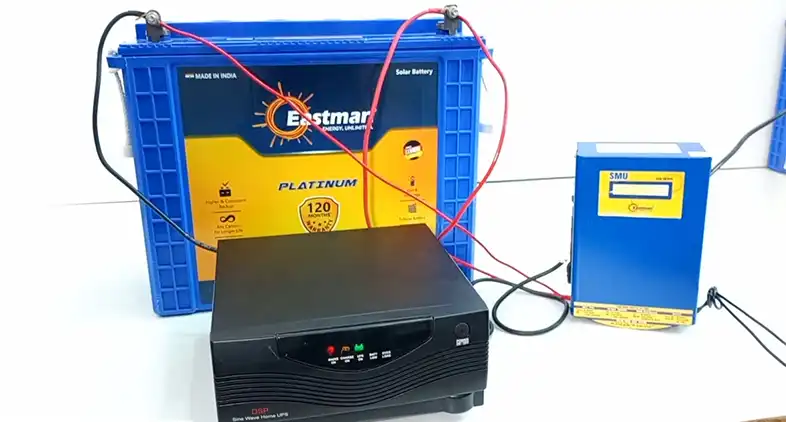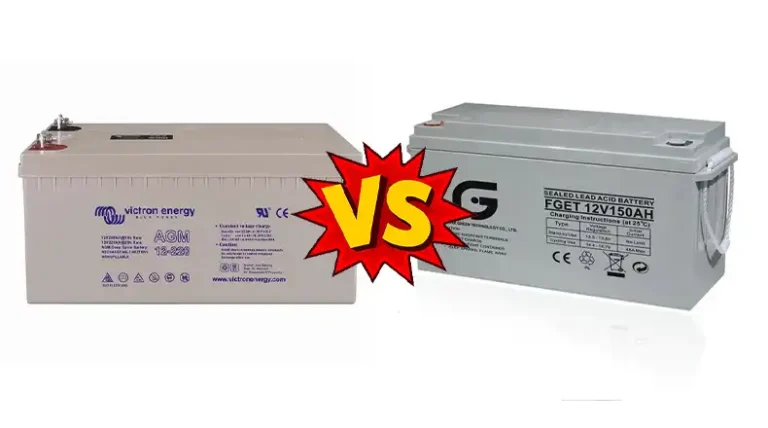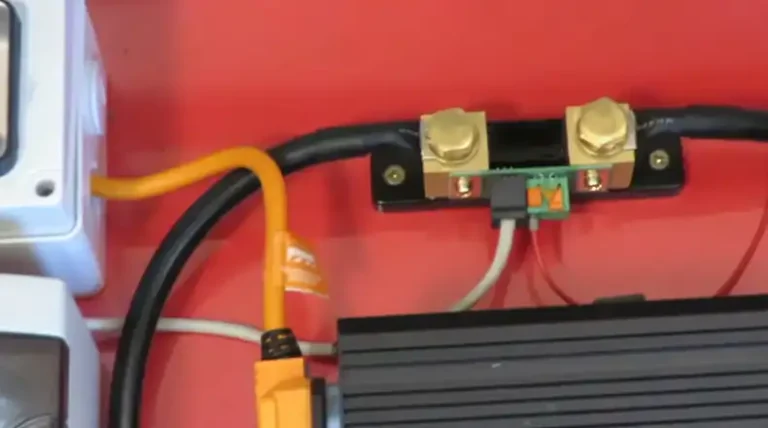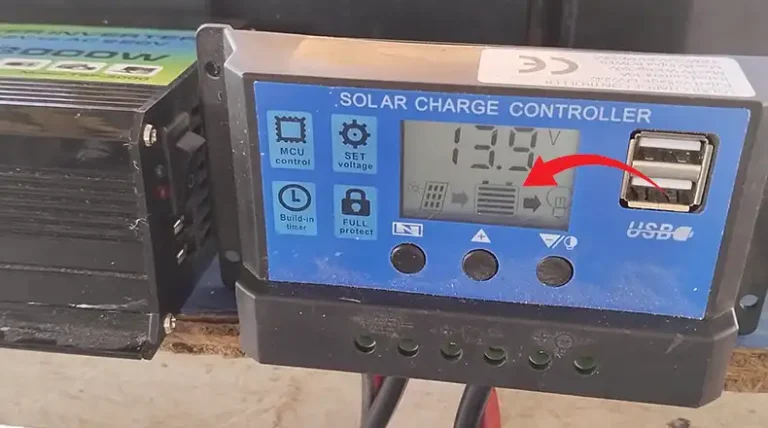Can I Use Solar Battery in a Normal Inverter?
Iintegrating solar energy systems into existing electrical setups can sometimes be confusing, especially when it comes to inverters. A common question that arises is, “Can I use a solar battery with a normal inverter?”
In short, the answer is yes, you can use a solar battery with a normal inverter, but there are some important considerations. Using a solar battery requires a charge controller to regulate the charging and discharging of the battery. The inverter needs to be able to handle DC input from the solar battery system. Not all normal inverters have this capability. Additionally, normal inverters may not provide the most efficient integration for a solar battery system.
To fully understand the intricacies of combining solar batteries and inverters, continue reading this in-depth guide. We’ll explore solar battery basics, inverter compatibility considerations, wiring configurations, the pros and cons of using a normal inverter, and some helpful tips for installation.

Solar Batteries and Inverters
Before diving into the details of integrating a solar battery with an inverter, let’s quickly go over some solar energy basics.
Solar Battery Basics
Solar batteries, also called solar storage batteries, are designed to store energy from solar panels and provide power when the sun isn’t shining. Common types of solar batteries include:
- Lead-acid batteries – Inexpensive but shorter lifespan
- Lithium-ion batteries – More expensive but longer lifespan
- Saltwater batteries – Emerging technology, not yet widespread
Solar batteries consist of one or more cells that undergo a chemical reaction to store and discharge energy. They use a charge controller to protect against overcharging and overcharging.
Inverter Basics
An inverter converts DC (direct current) electricity from solar panels or batteries into AC (alternating current) electricity that can power home appliances and be fed back into the electrical grid.
Types of inverters:
- Stand-alone inverters – Convert DC solar power into AC for off-grid use
- Grid-tied inverters – Sync solar power output with the grid
- Hybrid inverters – Combine functions of stand-alone and grid-tied
Normal inverters are usually stand-alone or grid-tied models not specifically designed for solar systems.
Key Considerations for Pairing a Solar Battery with a Normal Inverter
Connecting a solar battery storage system to an existing normal inverter in your home is possible but presents some key considerations:
- Inverter DC Input Voltage Range: The inverter must be able to handle the DC input voltage from the solar battery bank. This is often 12V, 24V, or 48V for home systems. If the DC voltage range is incompatible, the inverter could be damaged or unable to function properly.
- Charge Controller Compatibility: A charge controller is needed to regulate the charging/discharging of the solar battery bank. The inverter and charge controller should have coordinated DC voltage ranges.
- Output Waveform and Power Ratings: Pure sine wave inverters are preferred over modified sine wave to run sensitive electronics and appliances. The inverter power rating must be sufficient for the household’s energy demands.
- Expandability Limitations: Normal inverters have limited capacity for expanding the solar battery bank in the future. Solar-specific inverters are more scalable.
- Lack of Specialized Solar Features: Normal inverters lack certain advanced features of solar-specific models like solar MPPT tracking, battery temperature sensing, etc.
Wiring Configurations for Connecting a Solar Battery to a Normal Inverter
If after considering the key factors above you determine your normal inverter is compatible, here are two wiring configurations to connect it to a solar battery system:
Grid-Tied System with Battery Backup

This allows the solar battery bank to provide backup power from the inverter if the grid goes down. The battery charges from solar via a charge controller. A bidirectional inverter sends excess solar power to the grid while drawing from the grid or batteries as needed.
Off-Grid Inverter with Solar Battery Bank

For a solar-only off-grid setup, the inverter draws power from the battery bank to generate AC electricity without a grid connection. The batteries charge from solar panels through the controller.
In both configurations, be sure to follow proper wiring size and standards. Consulting a solar installer is highly recommended.
Pros and Cons of Using a Normal Inverter with Solar Battery
Here are some key advantages and disadvantages of using your existing normal inverter instead of purchasing a specialized solar inverter:
Pros
- Cost savings from avoiding new inverter purchase
- The convenience of utilizing the existing electrical setup
- Ability to retrofit solar storage to grid-tied system
- Simplified installation process
Cons
- Limits on Solar expansion capability
- May lack advanced battery charging features
- Potential compatibility issues
- Less than optimal efficiency and performance
- Voided inverter warranty in some cases
For small-scale solar battery setups, the pros often outweigh the cons of sticking with a normal inverter. But for larger systems, the limitations make a purpose-built solar inverter worth the investment.
Tips for Installing a Solar Battery with a Normal Inverter
If you’ve weighed the pros and cons and decided to connect your solar battery bank to the normal inverter, here are some tips for safe and successful installation:
- Have an electrician confirm the inverter’s compatibility and capacity for the battery system.
- Only use solar batteries and charge controllers designed for home installations and the appropriate DC voltage range.
- Carefully select the wiring gauge needed for the system’s power transmission.
- Use appropriate solar DC circuit breakers, disconnects, and overcurrent protection devices.
- Ensure all electrical connections are securely fastened and properly grounded.
- Have a licensed solar contractor handle the design and installation if possible.
- Start small – add more solar panels and batteries over time once the system is up and running.
Taking the time to properly evaluate and install the solar battery and inverter system will keep your home’s electrical system running safely and efficiently.
Common Questions About Solar Batteries with Normal Inverters
Can Any Inverter Work With A Solar Battery?
No, the inverter needs to be compatible with the DC input voltage from the solar battery bank and have sufficient power capacity. Not all inverters meet these requirements.
What Problems Can Occur From Connecting A Solar Battery To An Incompatible Inverter?
Issues like the inverter overheating, shutting down unexpectedly, damaging the batteries, poor power output, and more can occur if the inverter is undersized or not designed for solar battery DC input.
Is A Charge Controller Required For A Solar Battery System?
Yes, a charge controller is essential to regulate charging from solar panels and prevent overcharging/deep discharging that can damage batteries. Most systems have the controller integrated.
How Much Efficiency Is Lost By Using A Normal Inverter Versus A True Solar Inverter?
Estimates vary, but efficiency losses of 5-20% are possible from lacking MPPT tracking and other solar-specific inverter features designed to optimize performance.
Can I Use An Off-Grid Inverter On-Grid With A Battery Backup?
Sometimes, though on-grid systems require special safety measures. It’s recommended to consult an electrician on whether your off-grid inverter model can work safely in a grid-tied solar battery system.
Can I Damage My Normal Inverter By Connecting A Solar Battery To It?
It is possible to damage a normal inverter by connecting an incompatible solar battery system. To avoid damage, the inverter must be rated for the DC voltage range of the batteries and have sufficient power-handling capabilities. Consulting an electrician is recommended to ensure the inverter can safely handle the solar battery system.
What Solar Battery Charging Features Will I Miss Out On By Using A Normal Inverter?
Normal inverters lack some of the sophisticated battery-charging features of solar-specific inverters. These can include maximum power point tracking, multi-stage charging, battery temperature compensation, and other advanced charge regulation. Without these, charging efficiency may suffer.
Is It Better To Use An Off-Grid Or Grid-Tied Inverter With A Solar Battery?
Off-grid inverters are designed to work independently from the grid, which makes them a good simple option. Grid-tied models sync with the grid to sell excess power, but battery integration can be complex. Either can potentially work if designed properly.
Can I Use An Inverter From A Backup Generator With A Solar Battery Bank?
Sometimes generator inverters, especially modified sine wave models, are incompatible with solar batteries due to voltage differences and lack of solar MPPT tracking. Check specifications carefully. Pure sine wave generator inverters have the best chance of success.
What Should I Look For When Selecting A Charge Controller For My Solar Battery Inverter System?
Choose a charge controller suited for the system’s DC voltage and a number of solar panels. Also ensure it has appropriate amperage/wattage ratings and chosen features like Wi-Fi monitoring, temperature sensors, etc. MPPT-type controllers provide optimal solar charging efficiency.
Wrapping Up
The use of solar batteries paired with inverters provides an excellent way to utilize renewable energy while maintaining reliability. Although normal inverters may not be optimal, they can effectively be used with solar battery banks in many home installations after careful consideration of the inverter specifications and system setup. With proper configuration and installation, a solar battery system can successfully harness the sun’s power regardless of the inverter choice. I hope this guide provided you with a comprehensive overview of combining solar batteries and normal inverters. Please leave a comment below if you have any additional questions! Thanks for reading.






![[Explained] Solar Charge Controller Settings For AGM Battery](https://www.itekenergy.com/wp-content/uploads/2023/08/Solar-Charge-Controller-Settings-For-AGM-Battery-768x428.jpg)
